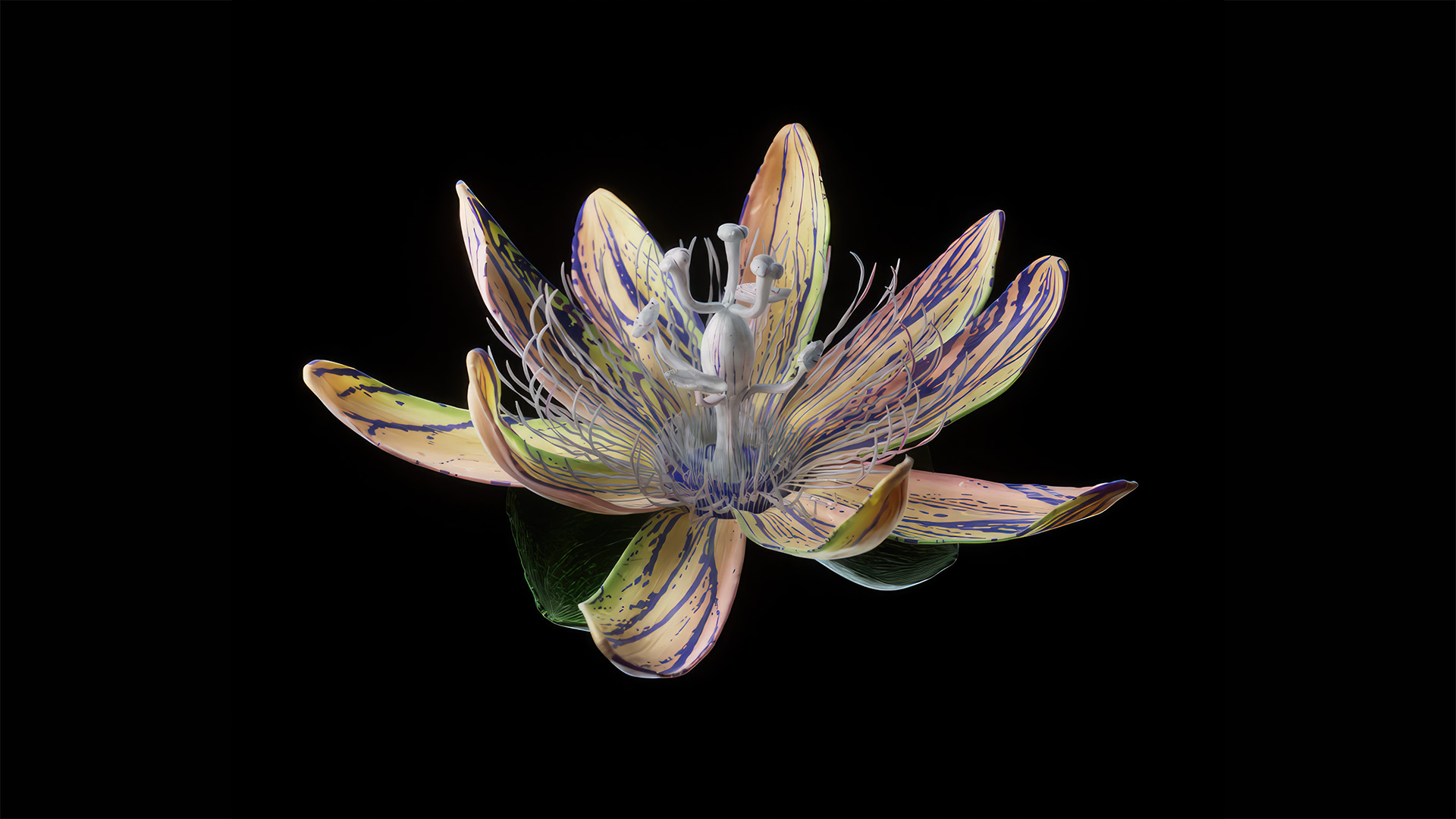Past Exhibitions
Mat Collishaw: Arrhythmia
16 September 2023 - 18 August 2024
TEMPORARY EXHIBITION
CURATOR: ALICE SHARP

Mat Collishaw, "Another Different Habit", Heterosis, 2023.
Image courtesy of the artist.
In Arrhythmia, Mat Collishaw creates a bridge between the world of art and the world of science allowing them to touch. To do this Collishaw has drawn from towering figures of art and science, Albrecht Dürer and Ernst Haeckel. He has combined the philosophies and methodologies of Dürer’s Renaissance and Haeckel’s nineteenth-centuryideas with the capacities of today’s AI and new technology to disrupt the flow or rhythm (arrhythmia means irregular heartbeat) of our normal responses to our natural world. From this he creates new readings and understandings of nature at this time of impending climate crisis.
Throughout Arrhythmia Collishaw examines the notion of the importance of careful observation of nature which Renaissance artists such as Albrecht Dürer and Leonardo Da Vinci believed were vital to advance our scientific way of looking at the world. In Whispering Weeds and Columbine Collishaw has animated Albrecht Dürer’s drawings The Large Piece of Turf (1503) which highlight the beauty in lowly plants at the side of the road. Collishaw’s plants move as though the wind is blowing through them, swaying as though underwater.
Drawing from Borusan Contemporary’s context alongside the Bosporus with amazing views of the currents running across the sea, Collishaw has created a new large-scale charcoal drawing Pandora with the beautiful botanical drawings of microscopic marine organisms by Ernst Haeckel combined with The Four Horsemen of the Apocalypse woodcut, circa1497/98, illustration by Albrecht Dürer. Collishaw has combined Dürer’s and Haeckel’s ideas with artificial intelligence. He fed the AI text prompts such as “marine organisms” and added them to the Dürer apocalypse image. The AI is not subject to human ways of looking at nature or disaster and creates its own new narrative from the references it finds online.
Collishaw’s fascination with Haeckel is interesting as he also combines art and science. Haeckel was a wonderful artist, a great proponent of Darwin’s theory of evolution and discovered thousands of new species. He conceived key environmental terms such as ecology influenced by scientist Alexander Von Humboldt who created a revolutionary theory that all aspects of the planet were interconnected — the “unity of nature”. Humboldt was one of the first to realize that humans were changing the climate. Both were followers of the philosopher Immanuel Kant and believed the imagination and use of our senses are necessary to create a scientific understanding of the natural world.
Like Dürer, Collishaw is also preoccupied with the prophetic looming environmental disaster. In his new video Even to the End once verdant nature is destroyed by forest fires with ahaunting soundtrackSamuel Barber's Adagio for Strings. In his Heterosis videonature has taken over London’s National Gallerywith Baroque paintings overgrown with Amazonian exotic and stylized plants, asking what might become of art in an environmental disaster.
The sinister effects of climate change on marine life are also portrayed by Collishaw’s incredible new zoetrope. As the zoetrope moves from the static our eyes frame the moving jellyfish with luminous bodies and contrast it with the central octopus all moving as if in the sea. The zoetrope Sounding Sirens highlights the proliferation of jellyfish around Turkish shores, many of which are invasive species and juxtaposes them with an imprisoned octopus symbolic of nature's intelligence.
Mat Collishaw’s Arrhythmia explores the overwhelming complexity of our technology-saturated world, our relationship to nature and impending ecological disaster. Collishaw draws on key historic thinkers entwining artistic discipline of close observation with scientific ideas. He suggests that to really connect with nature we need not only our theories but our imagination and our senses. This is vital at a time when both the pandemic and climate change have led many to question what they see as a narrower, more authoritarian view of science. Through his work Collishaw suggests that technology might also give us new ways of seeing and connections that create new understandings of nature and our relationship to it.

